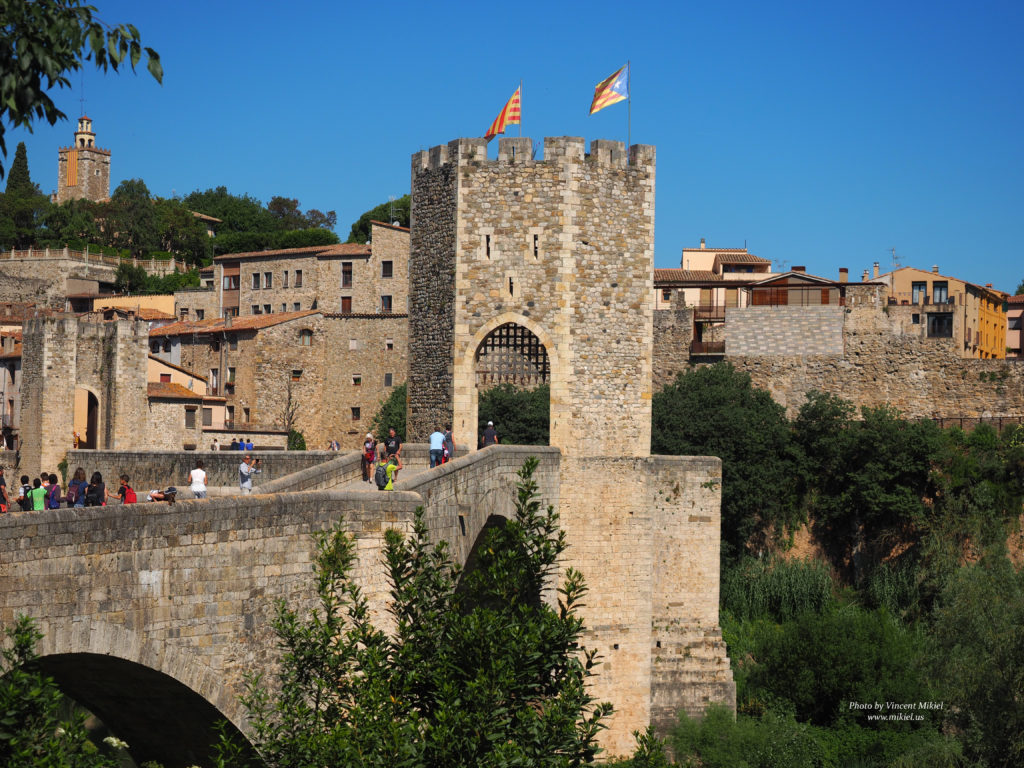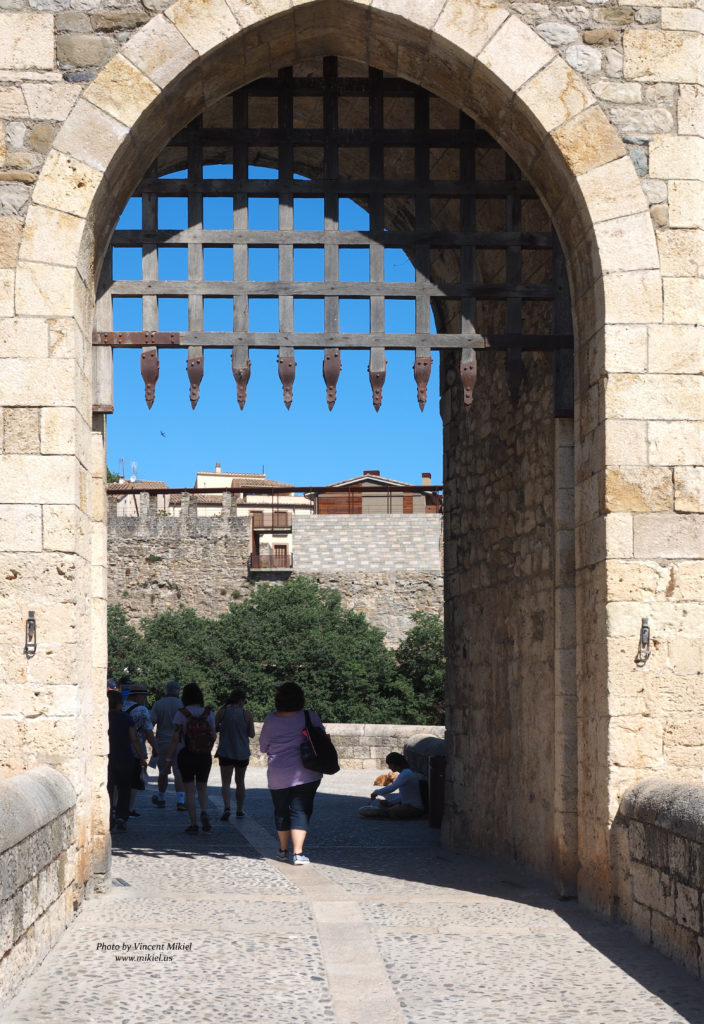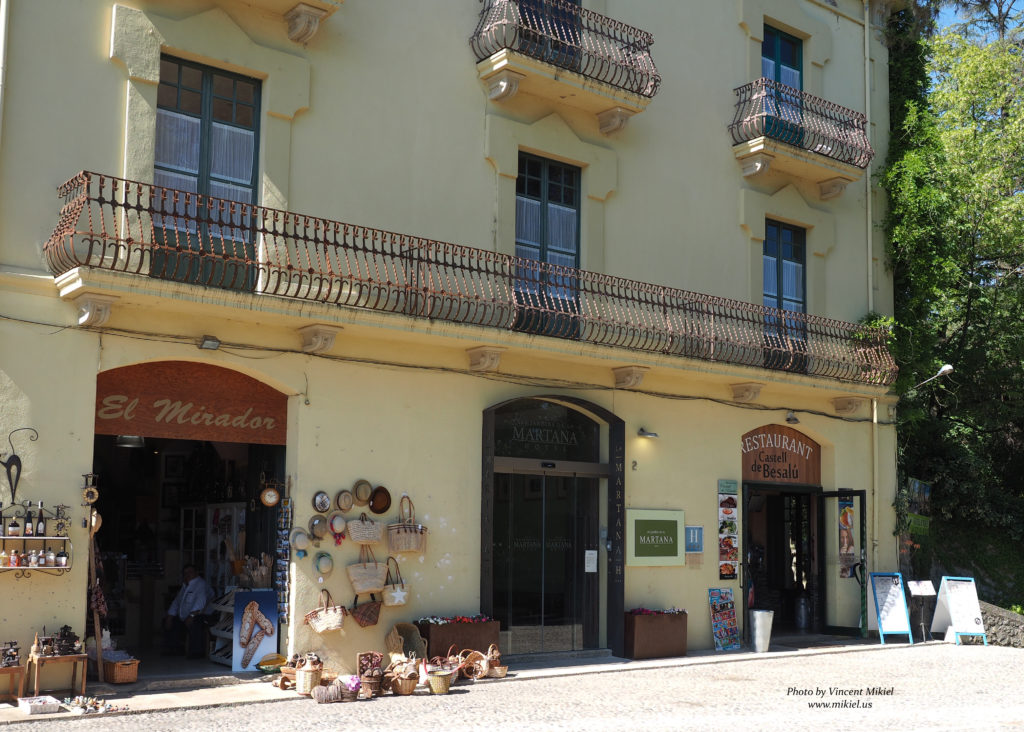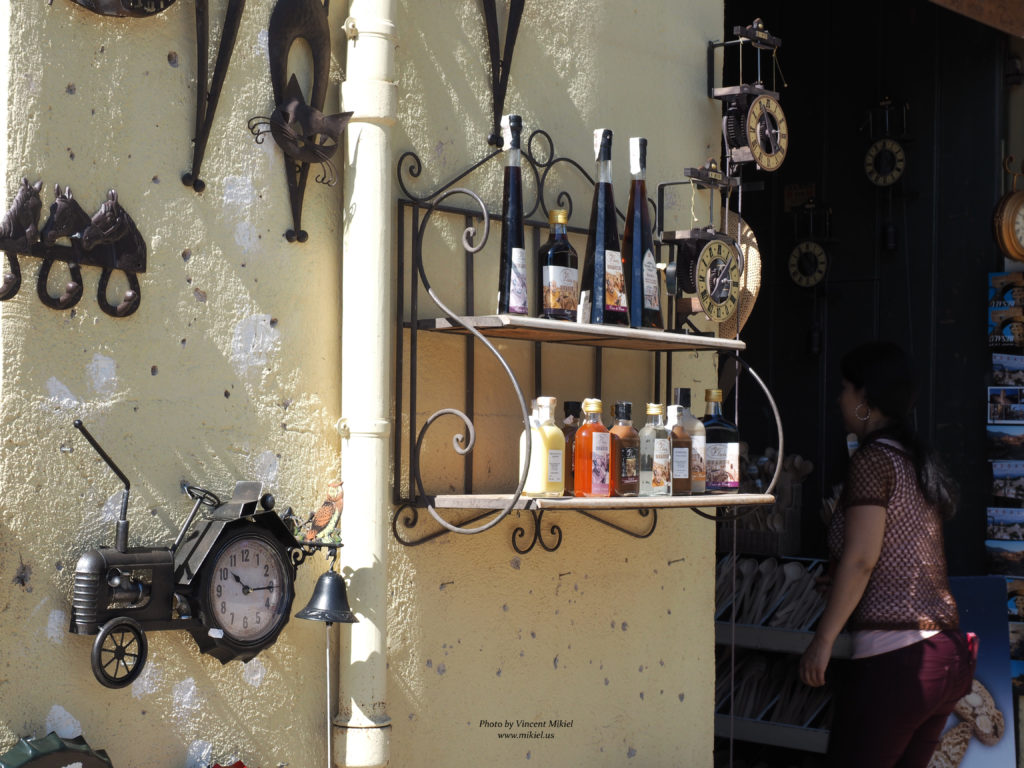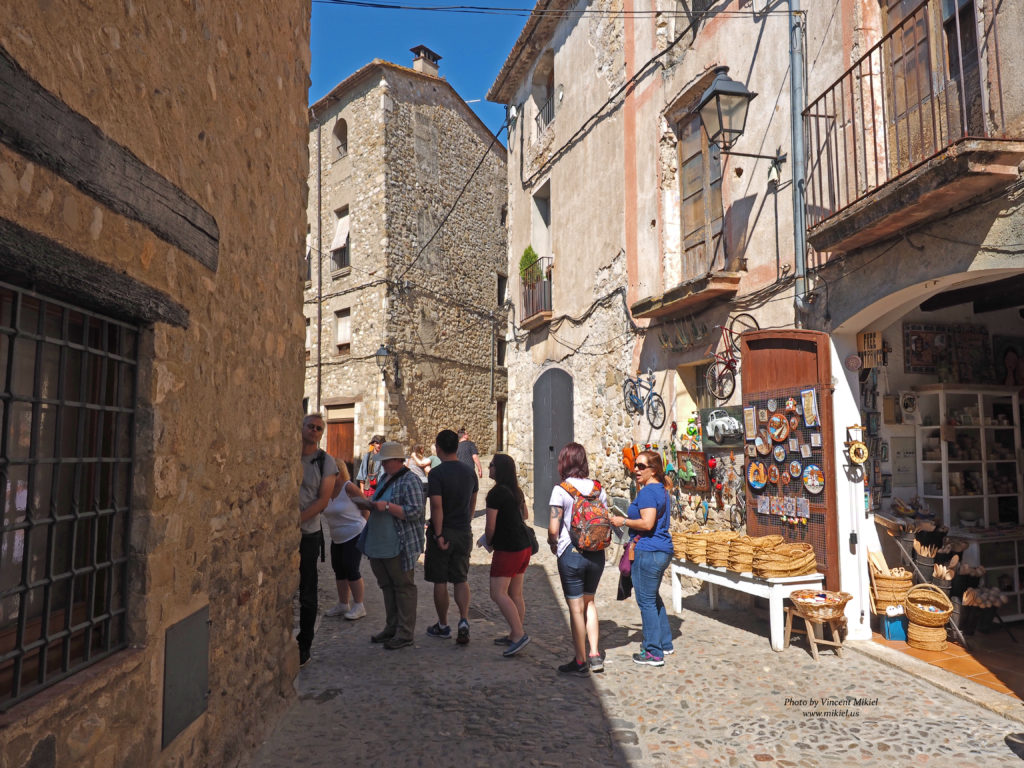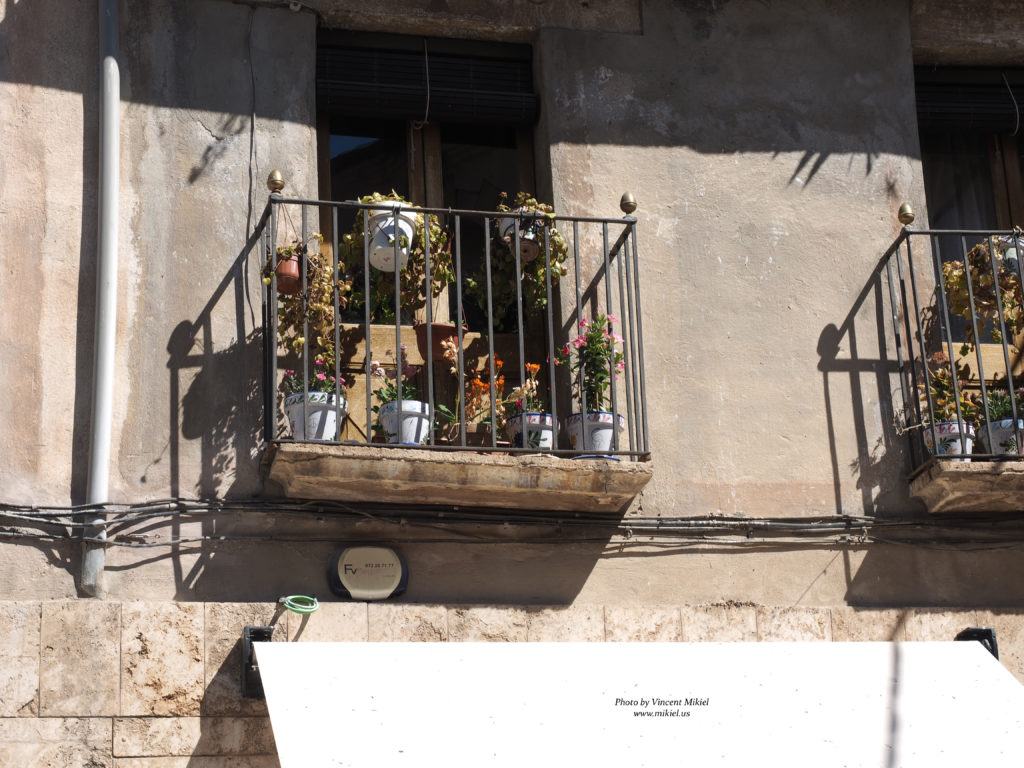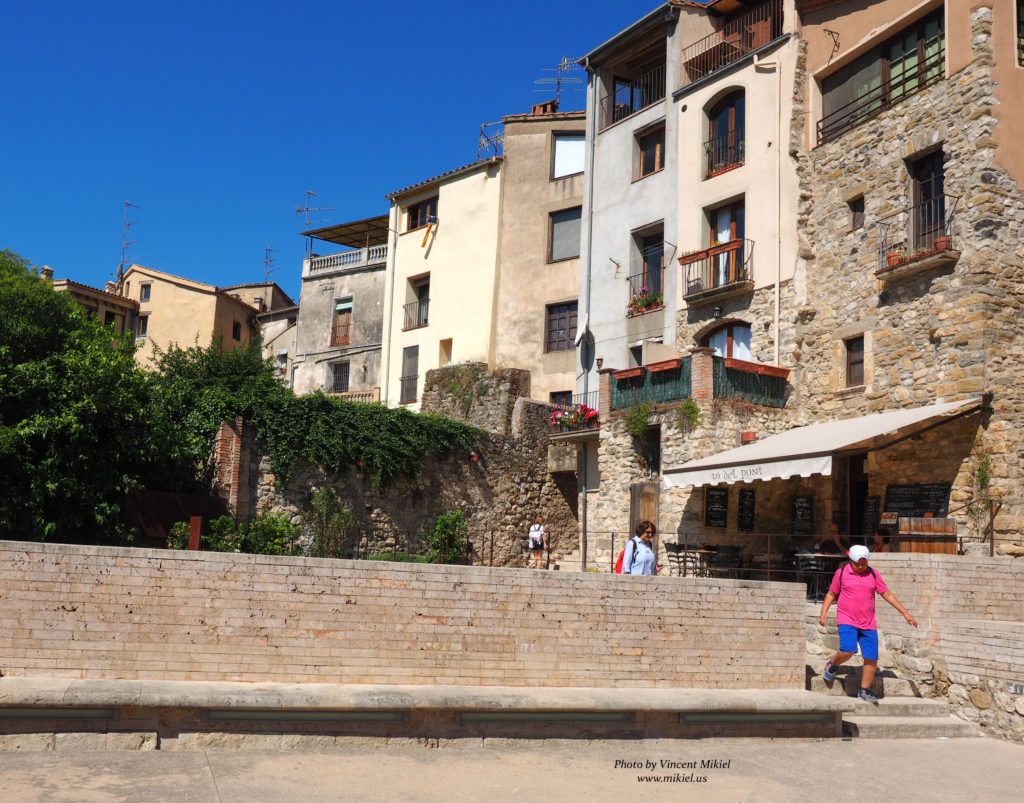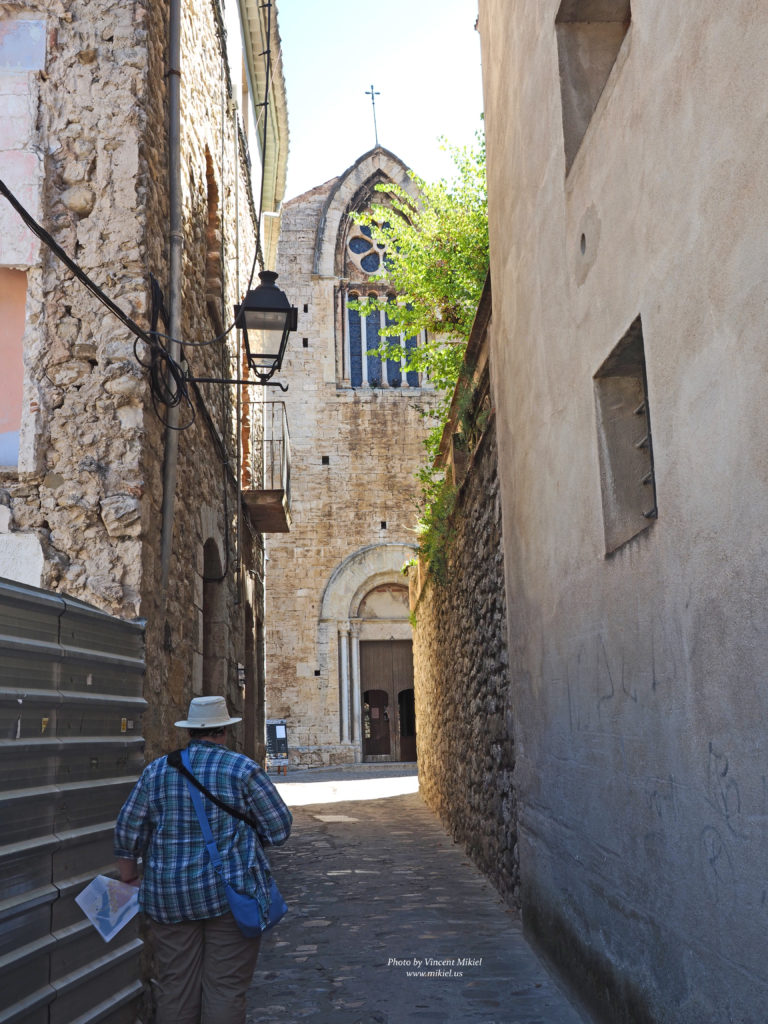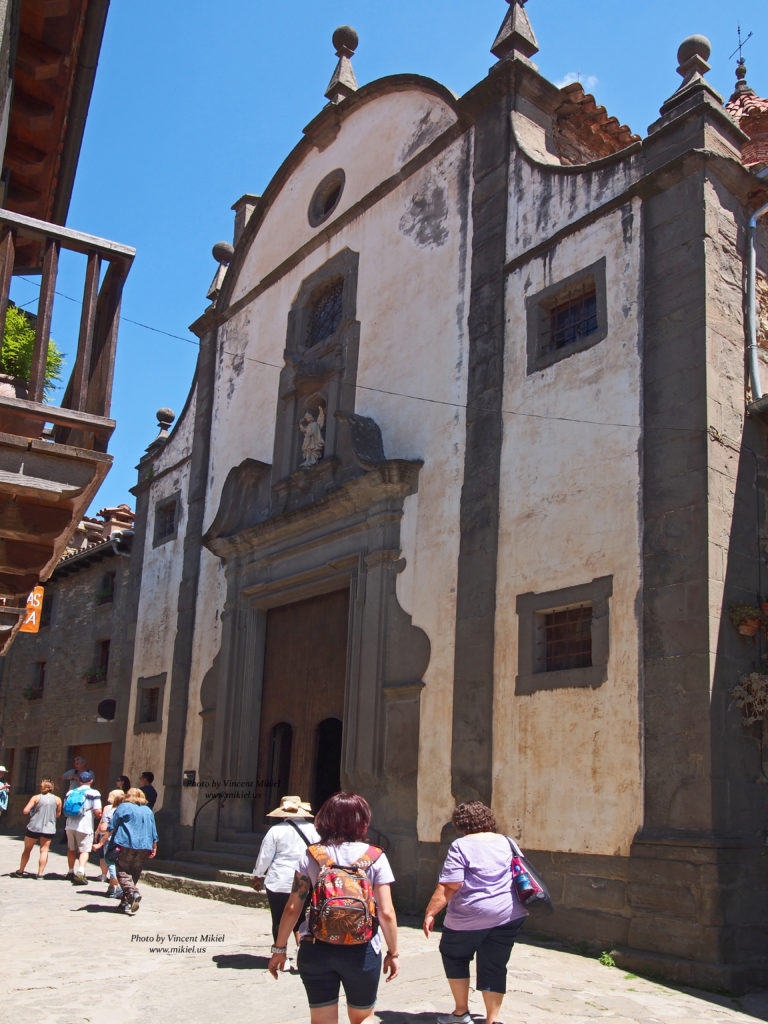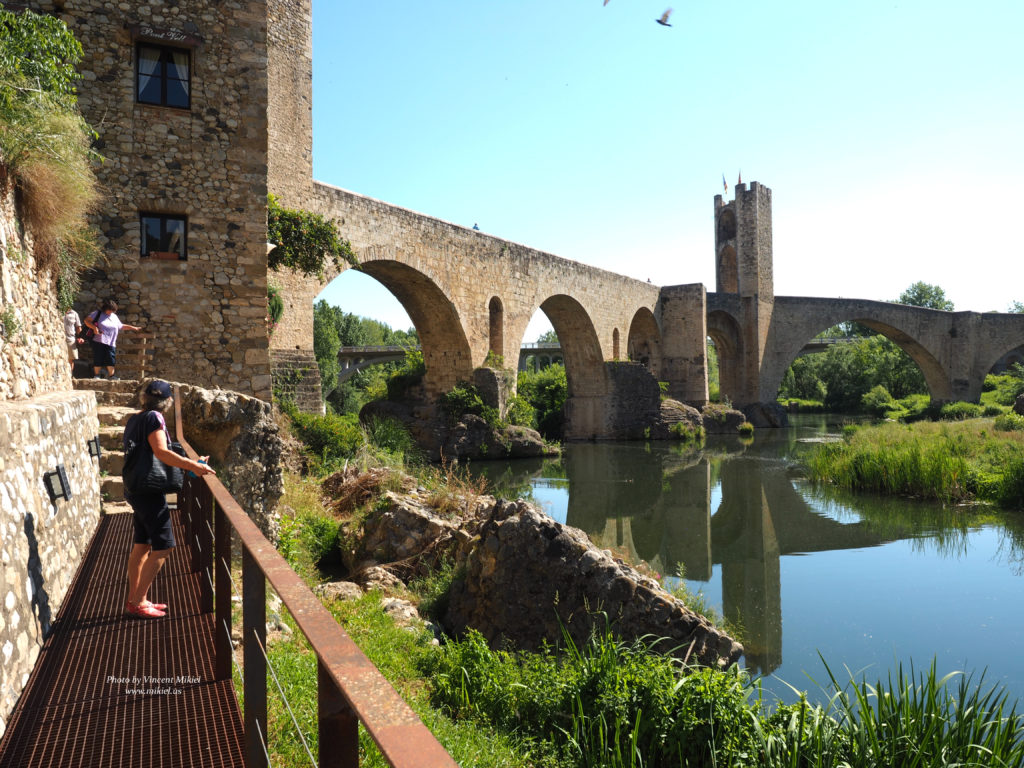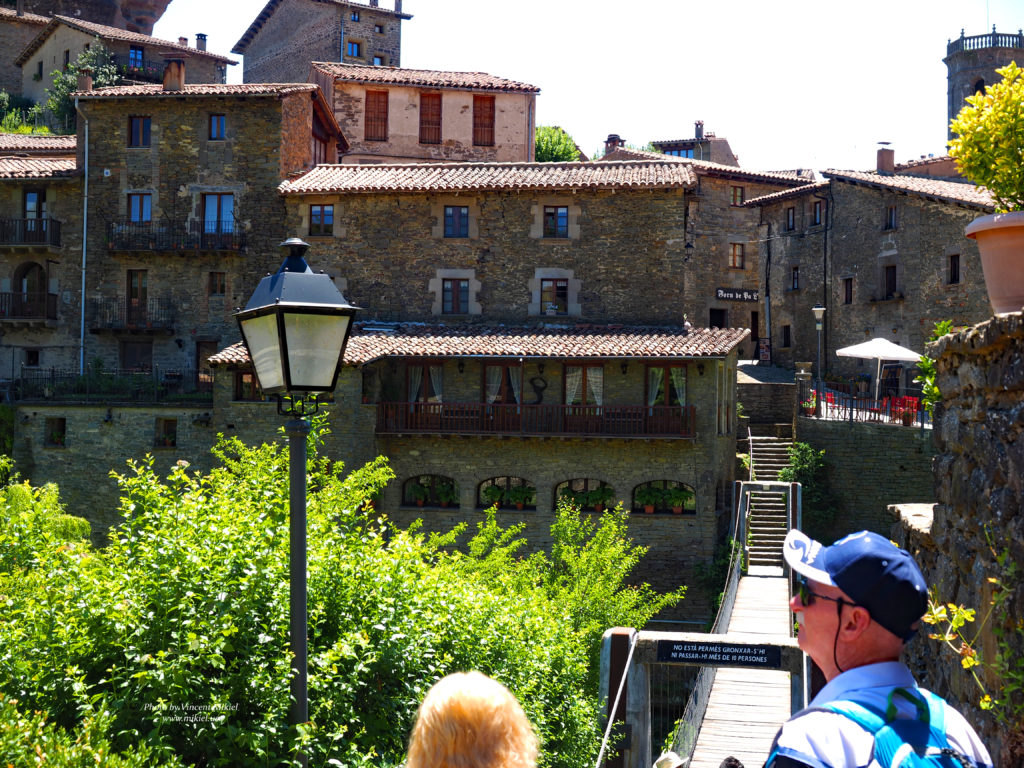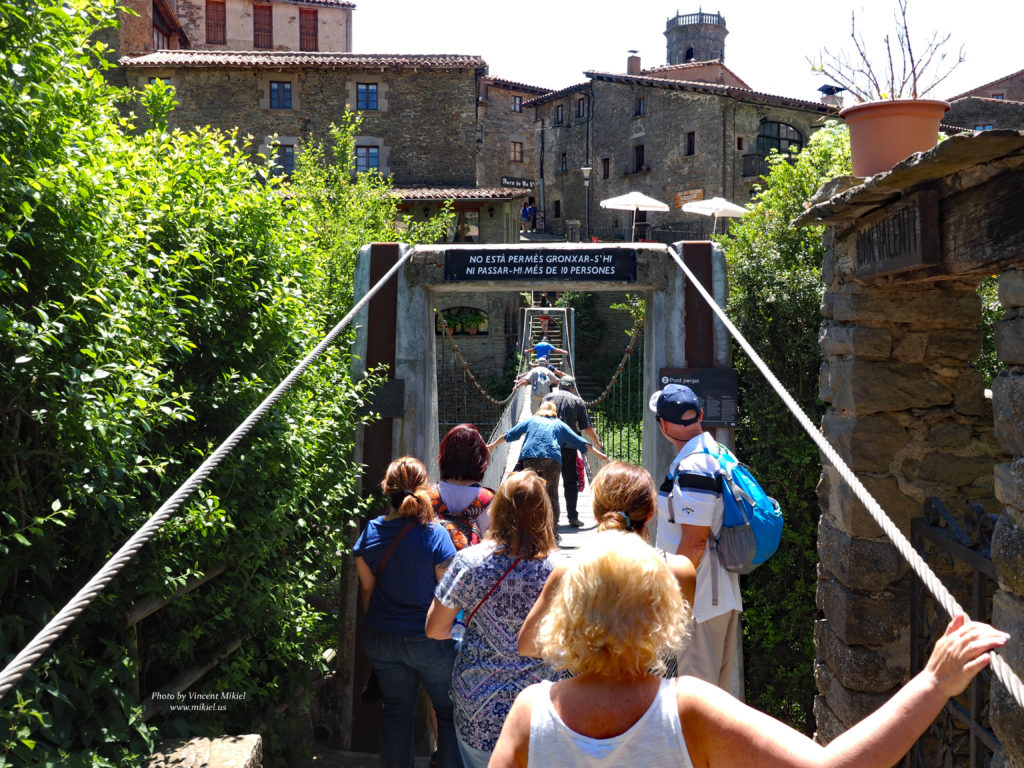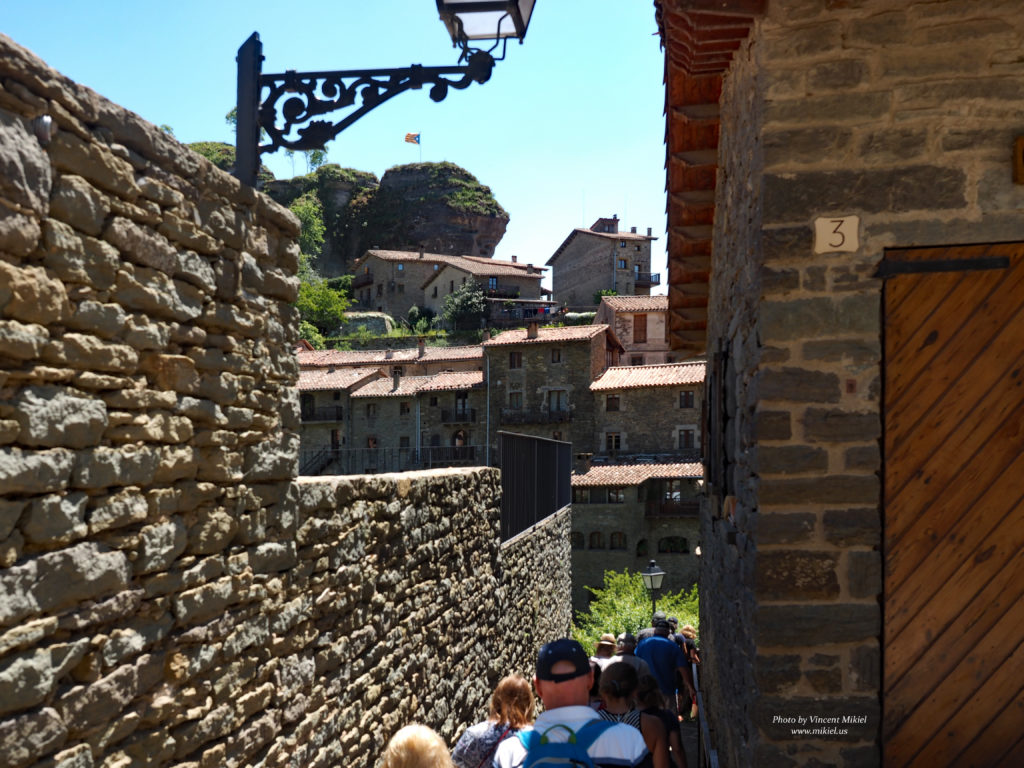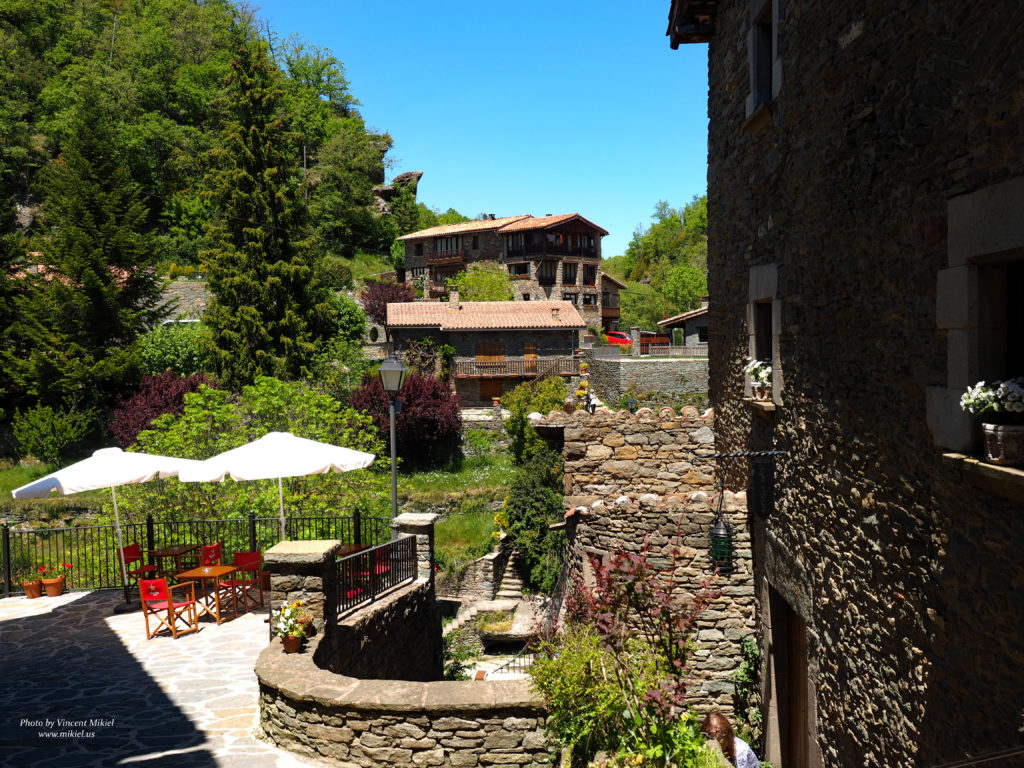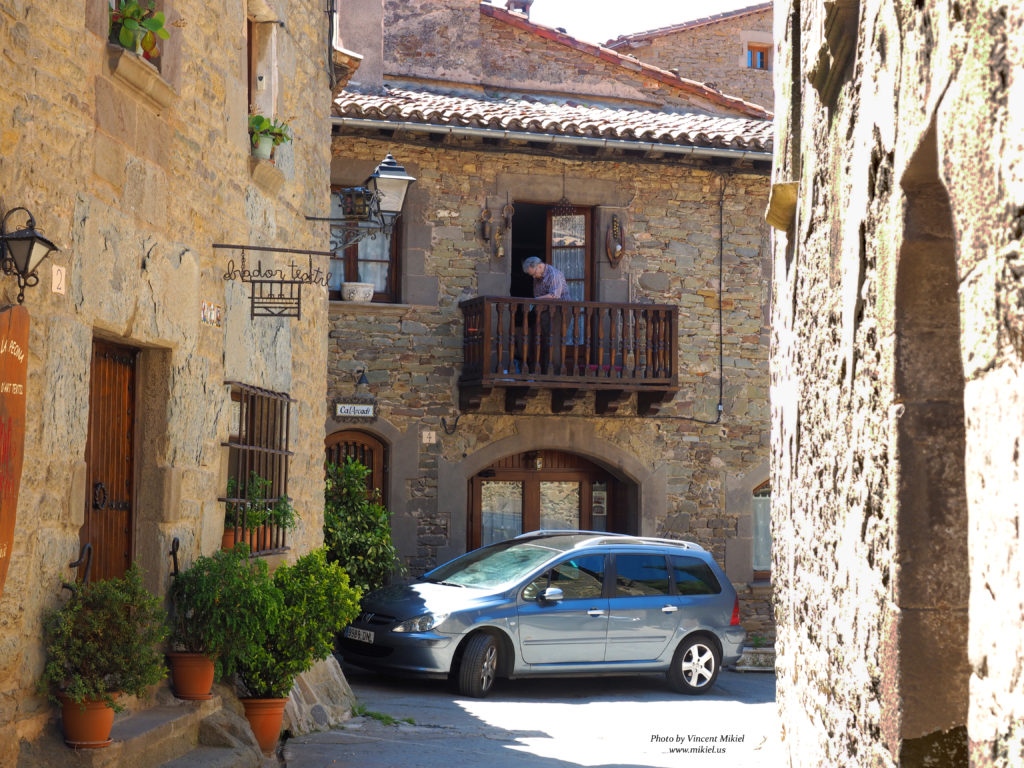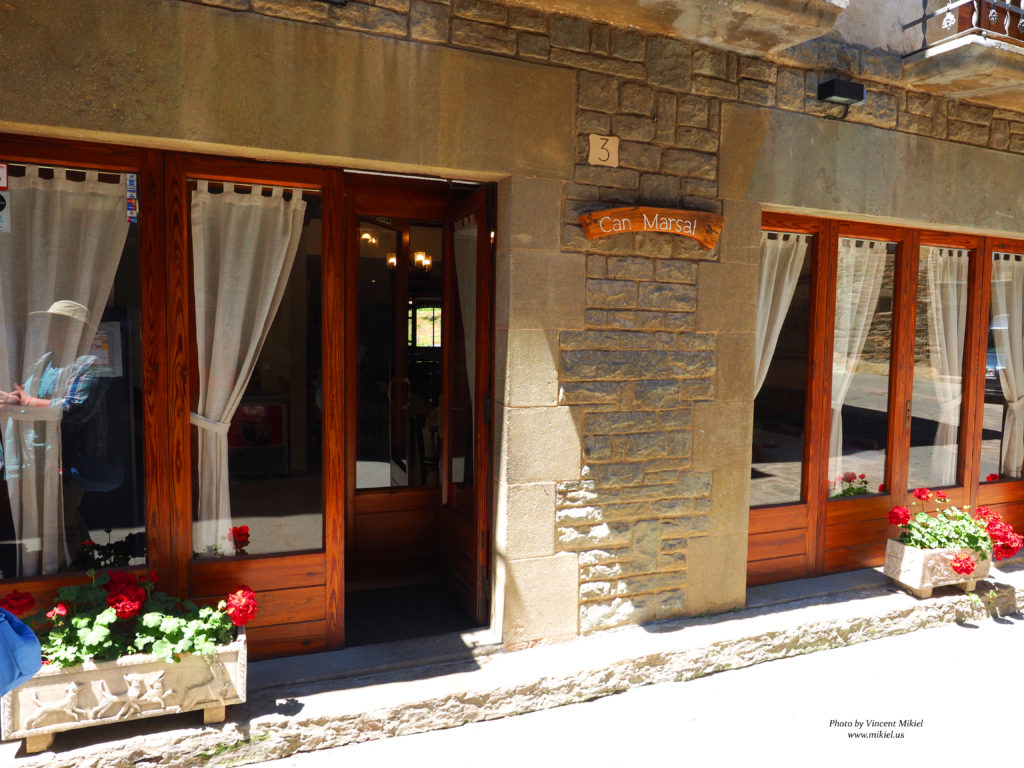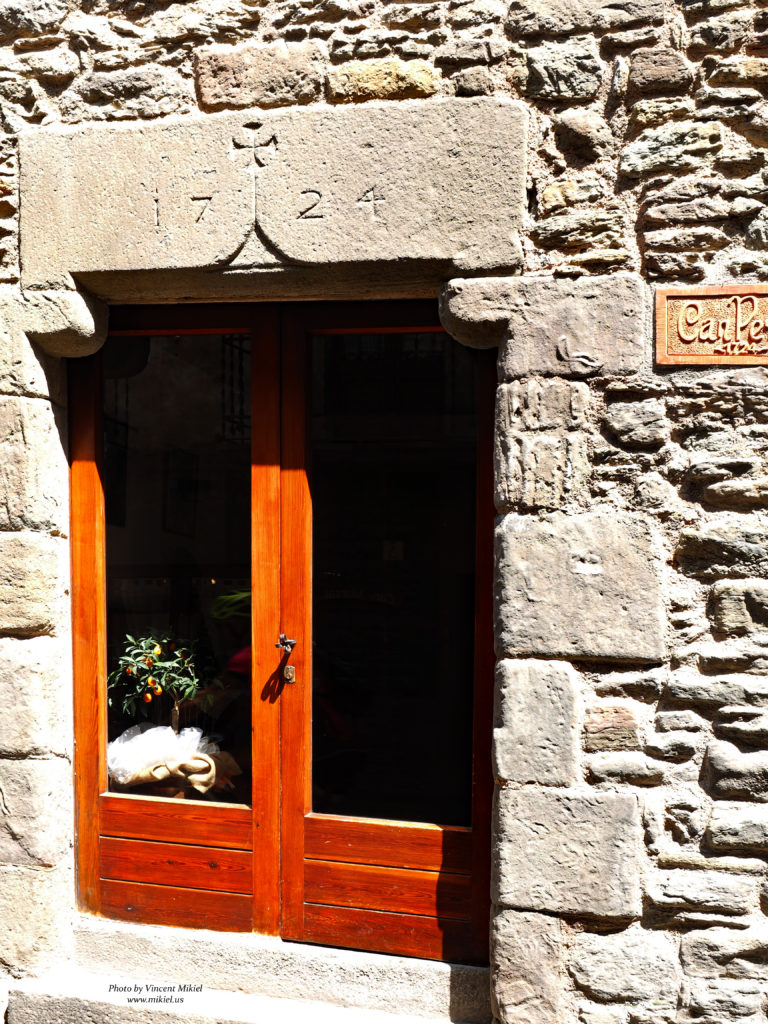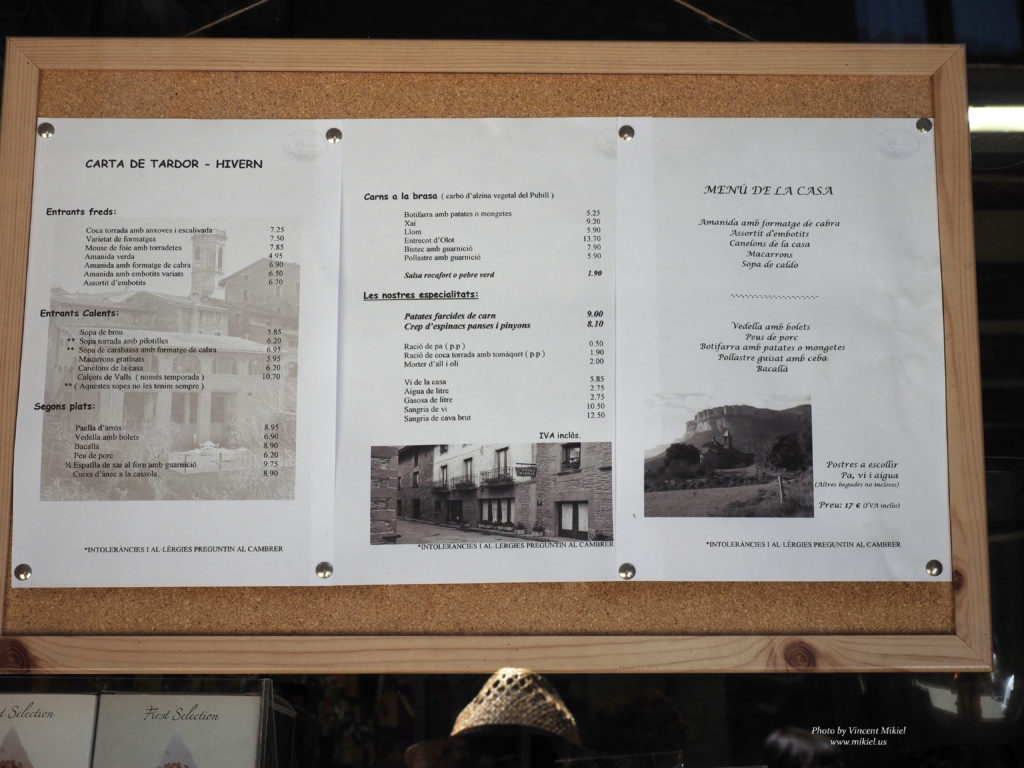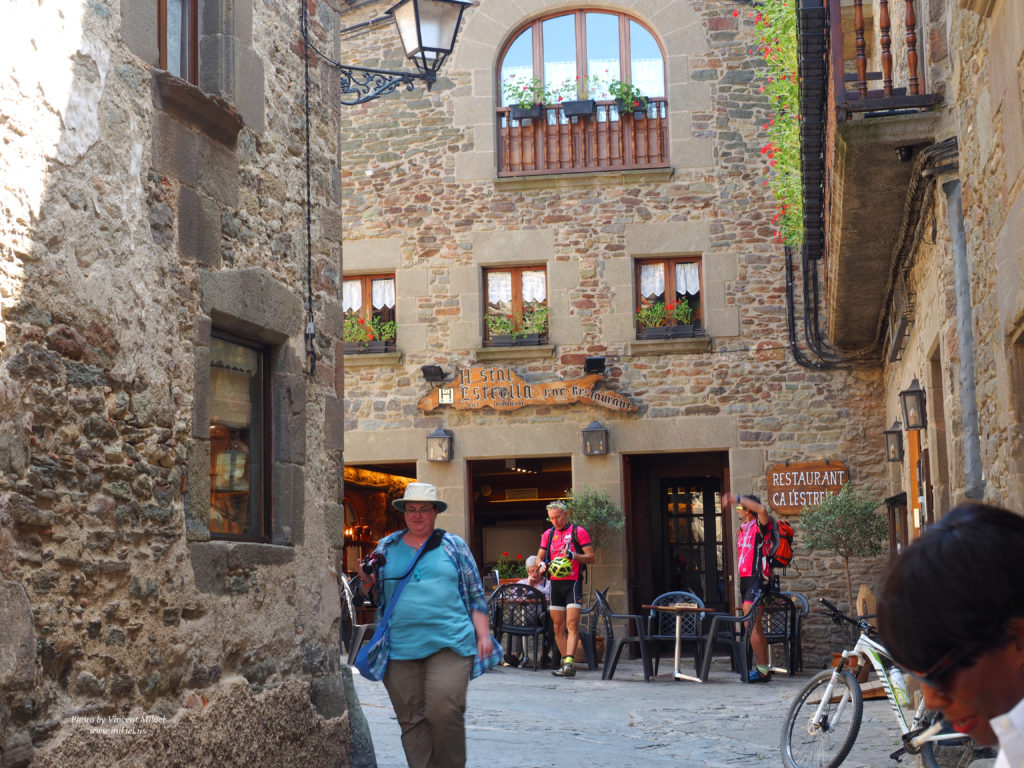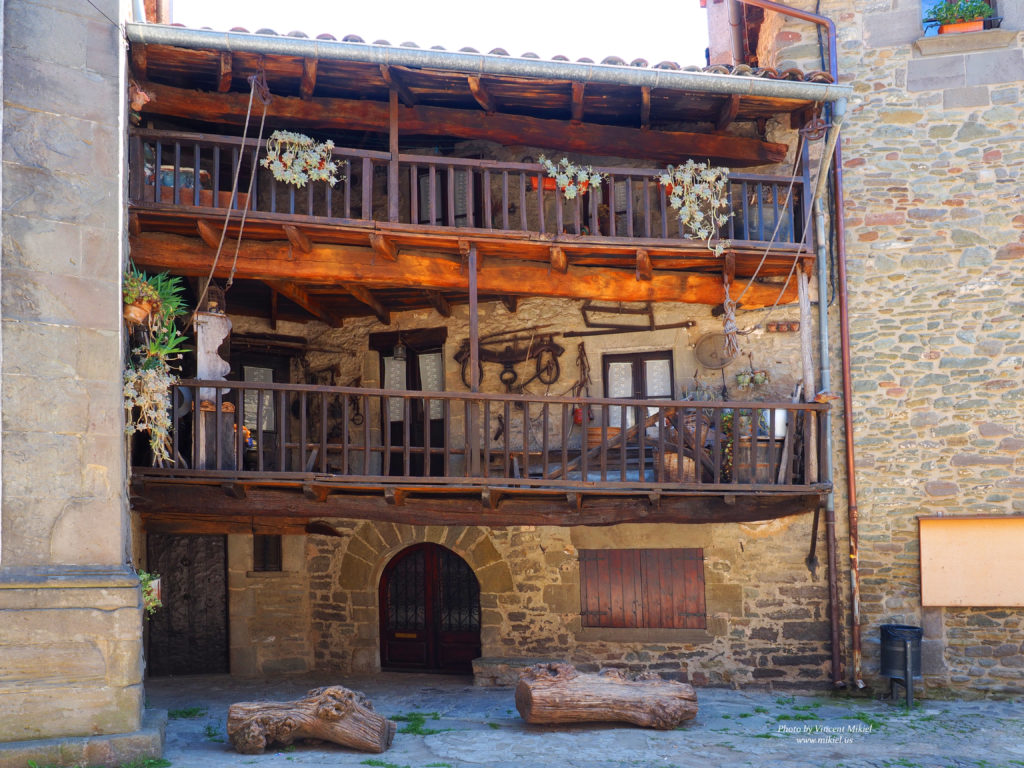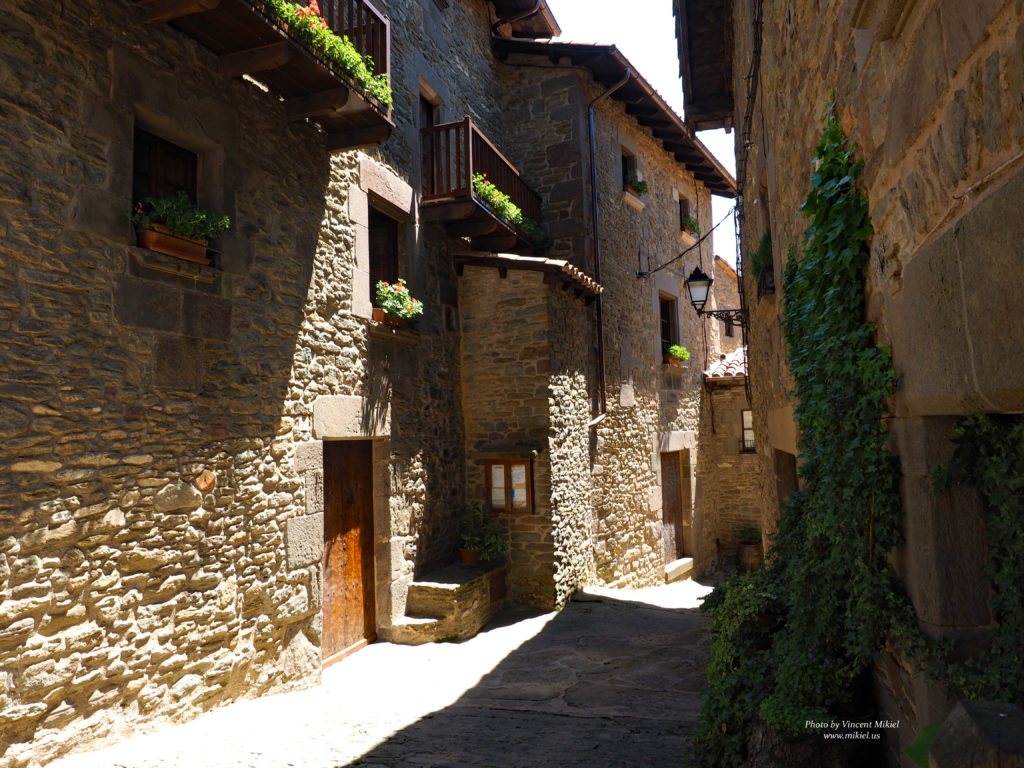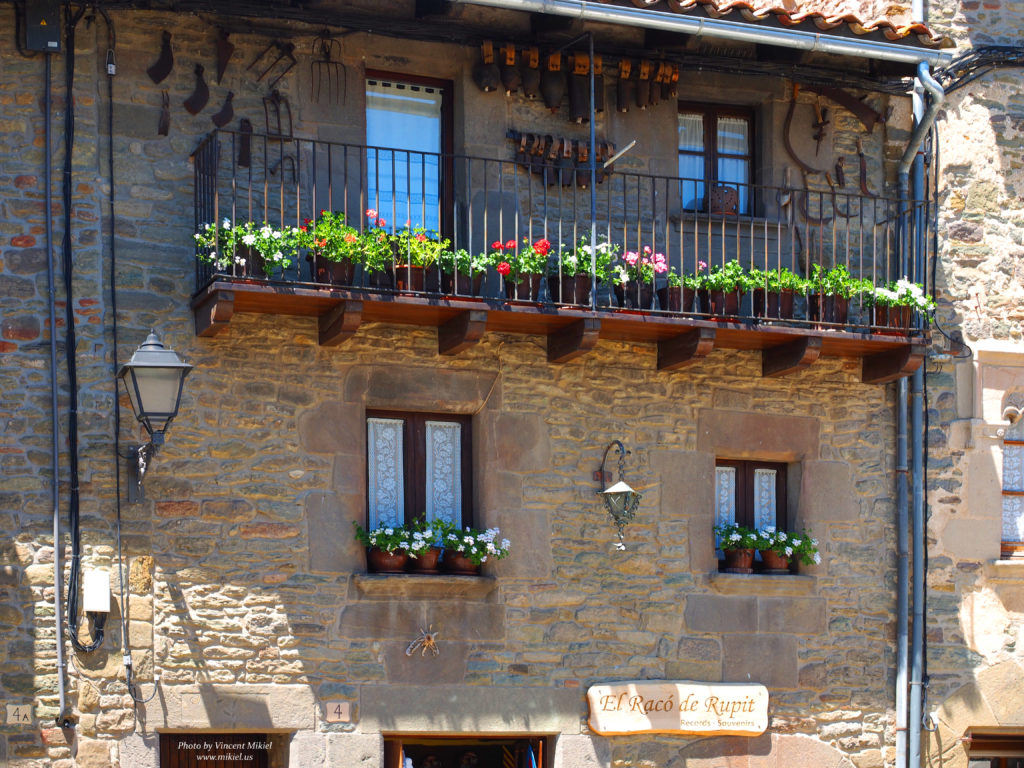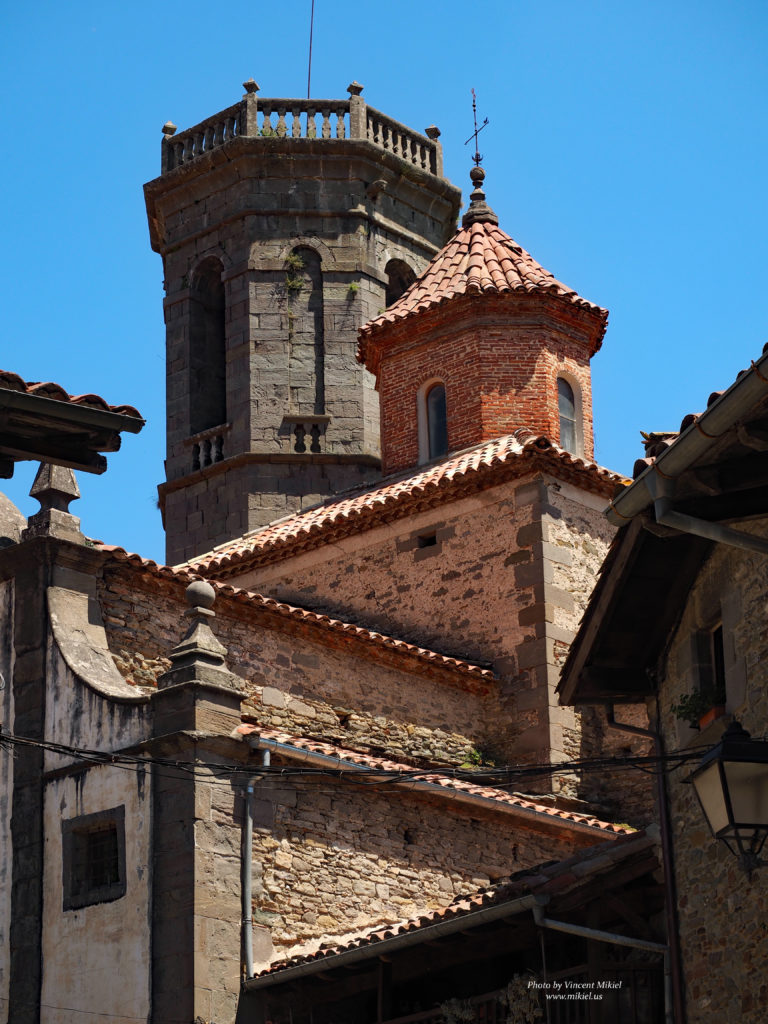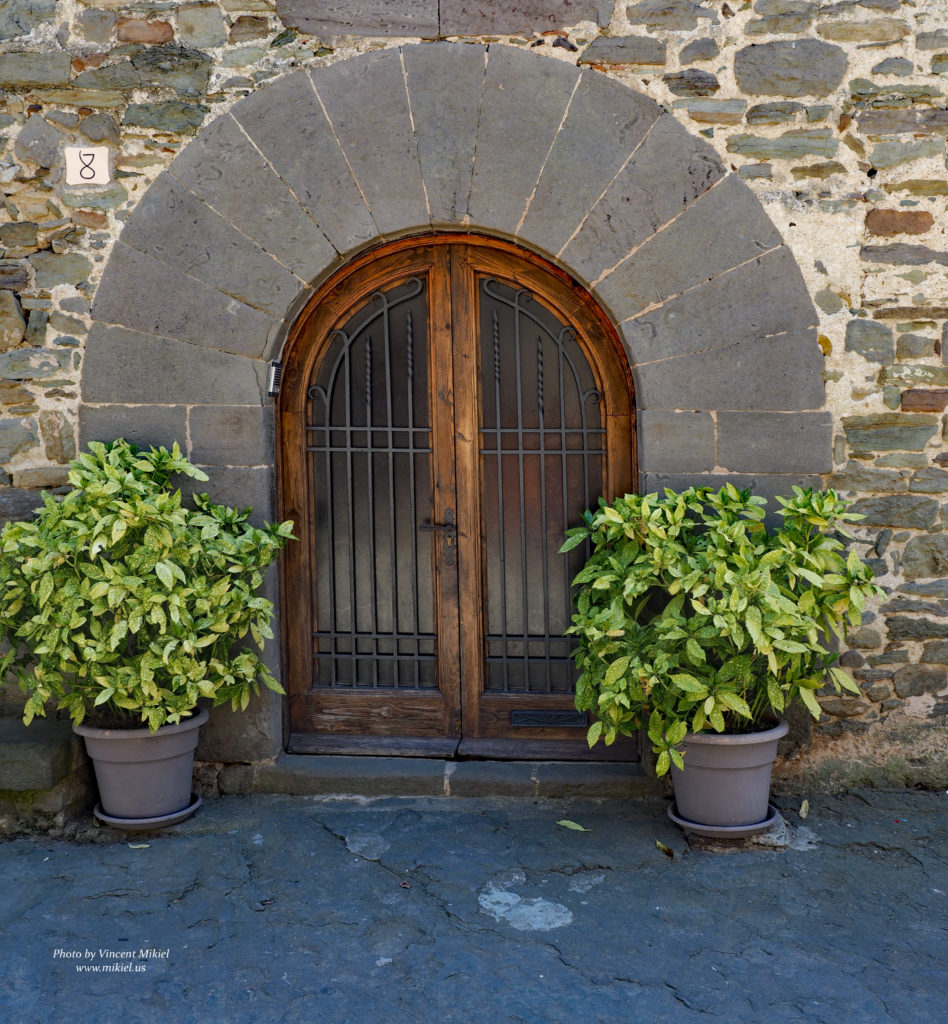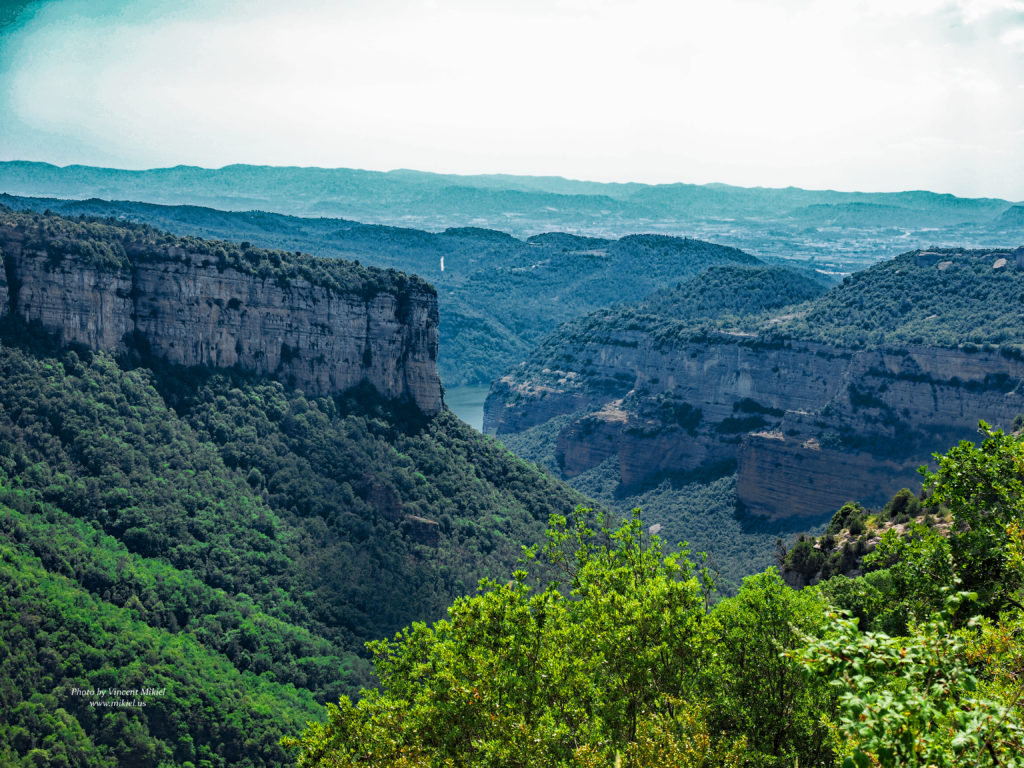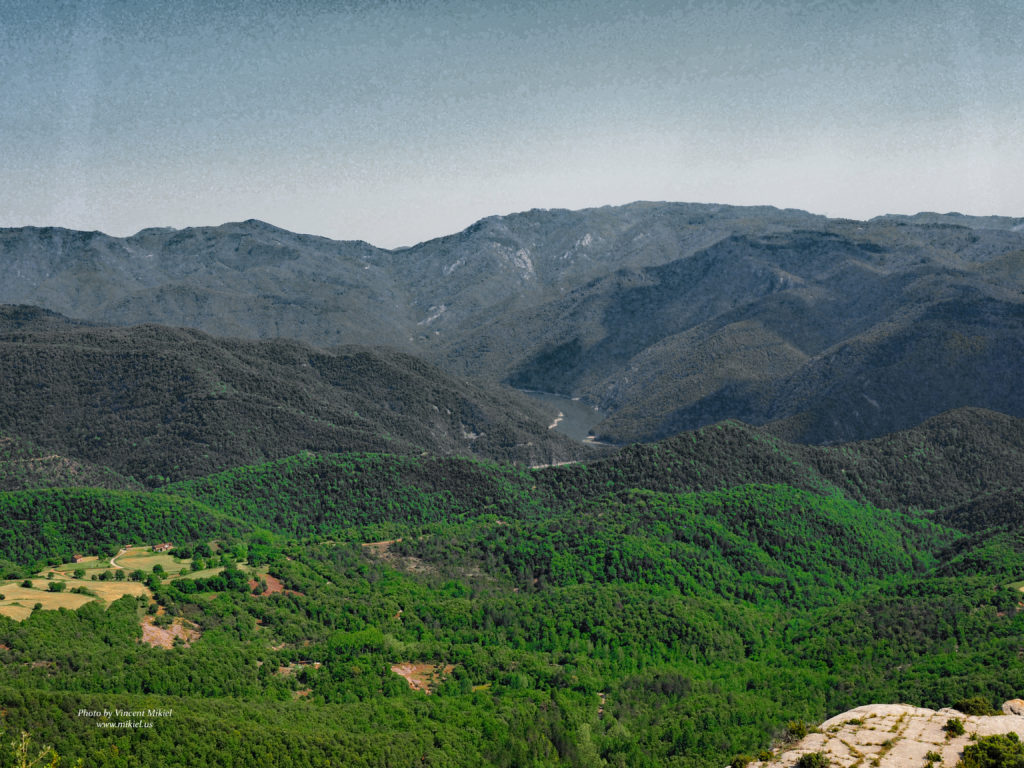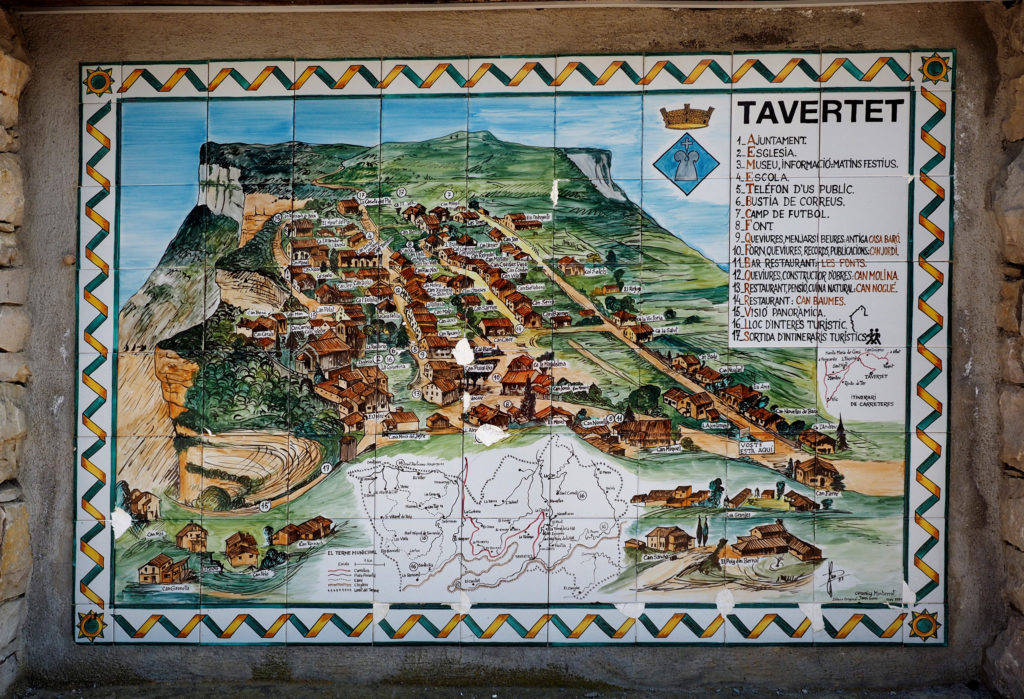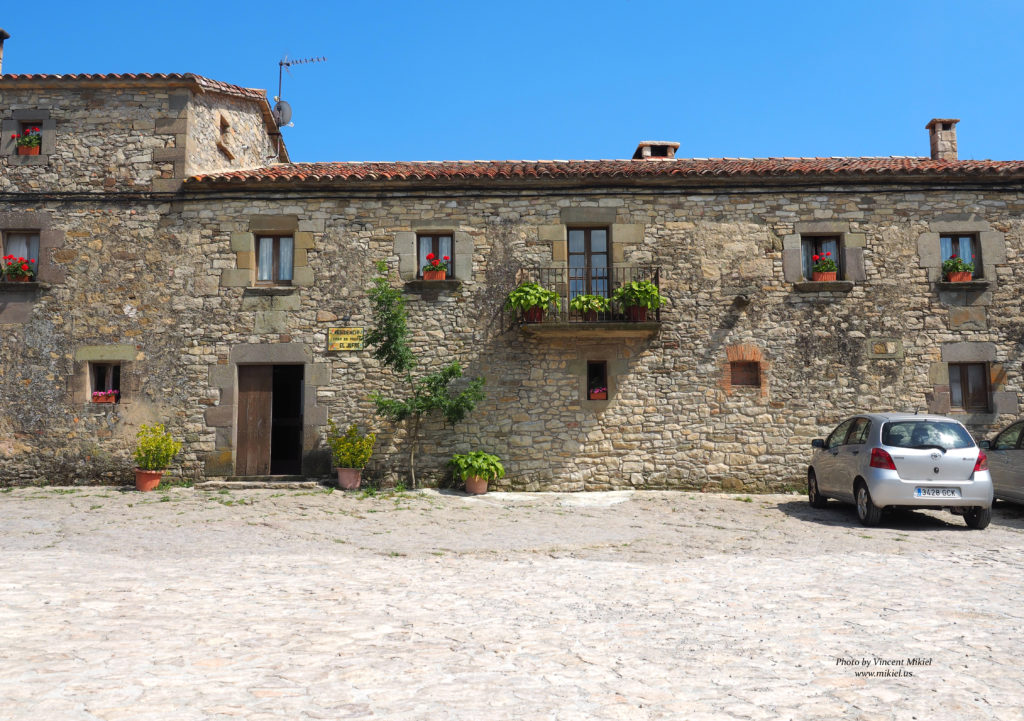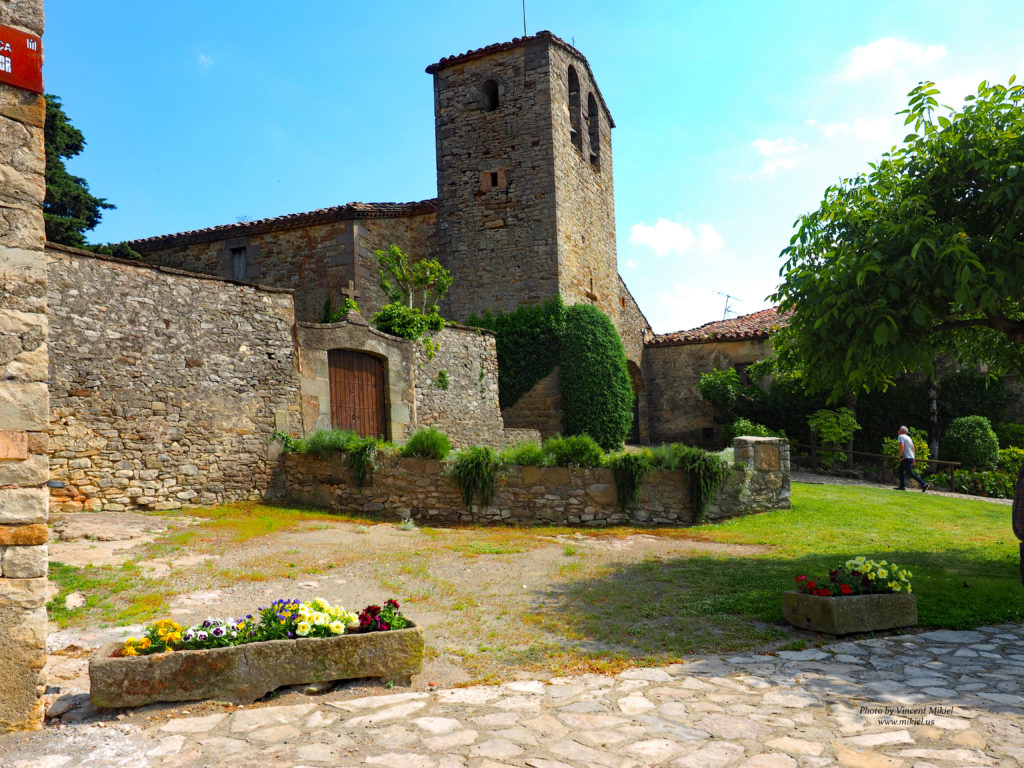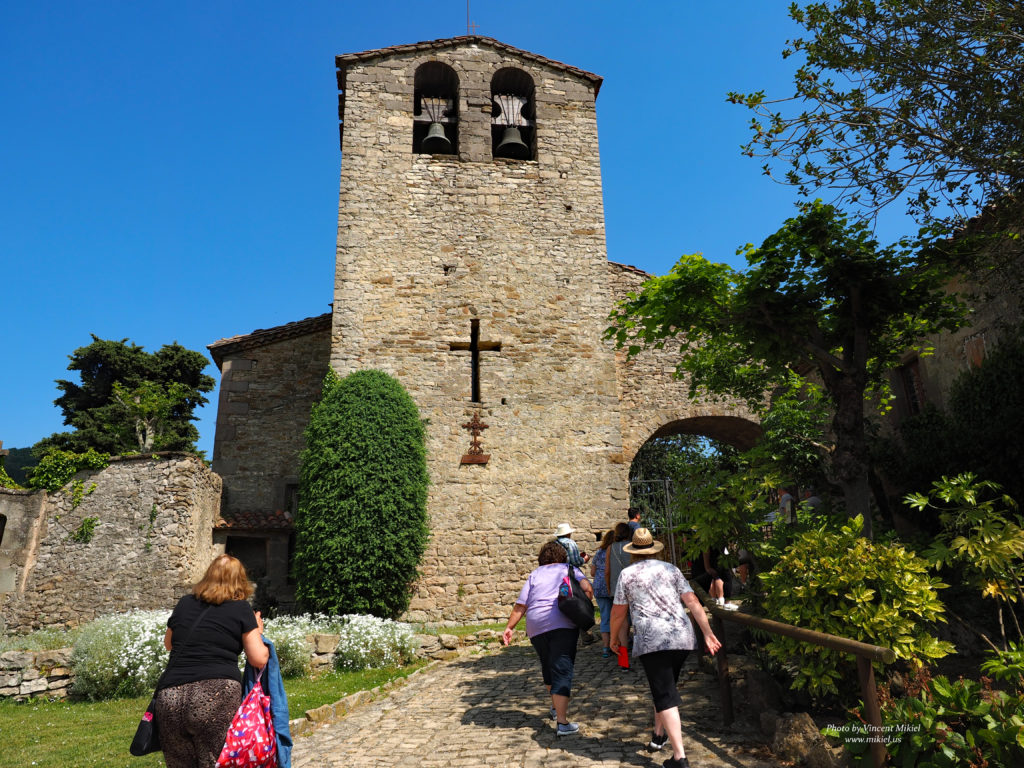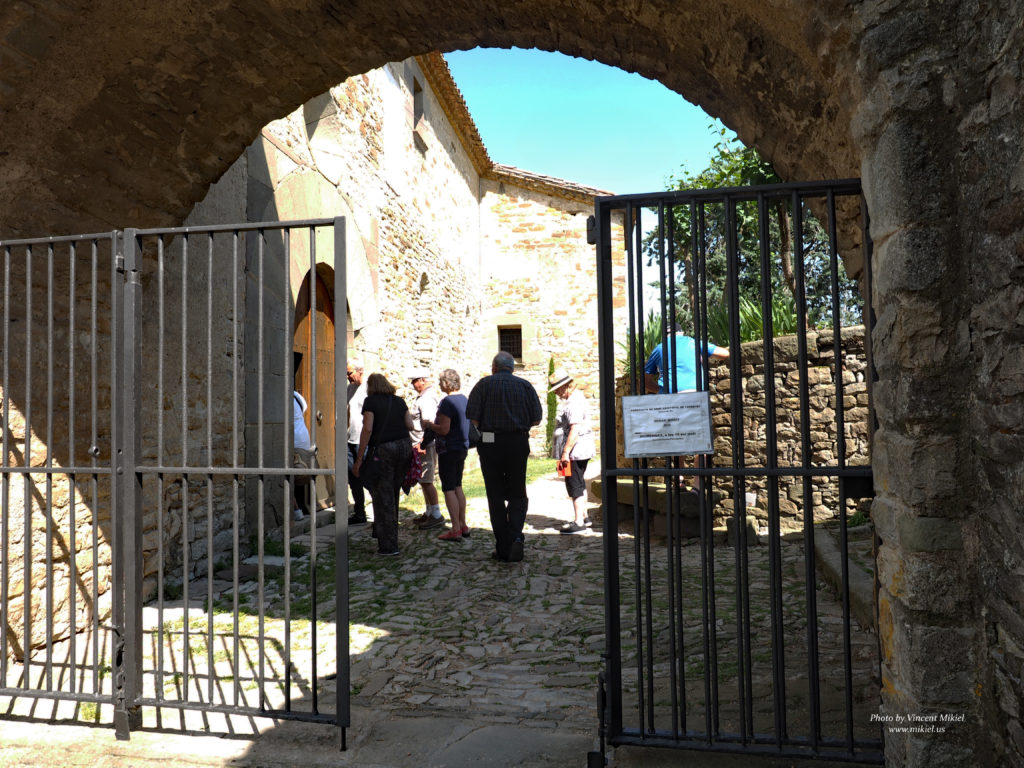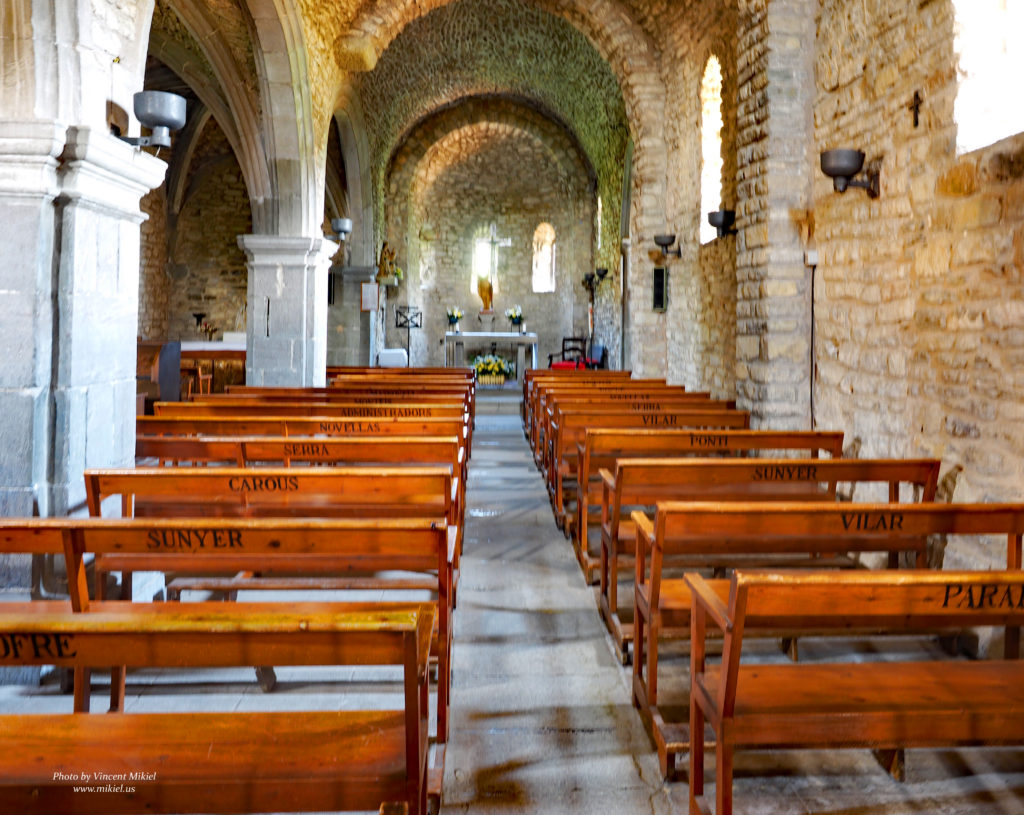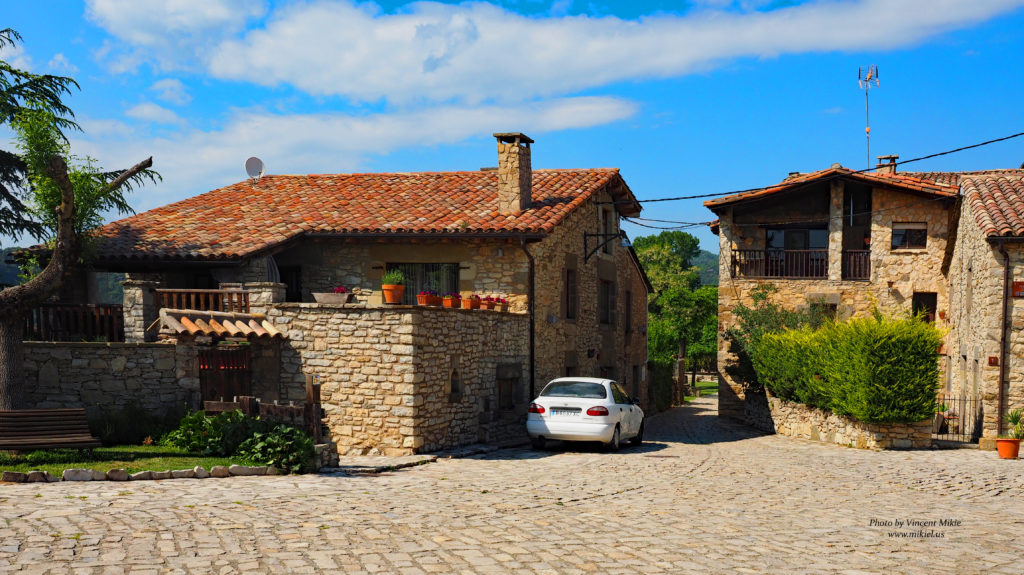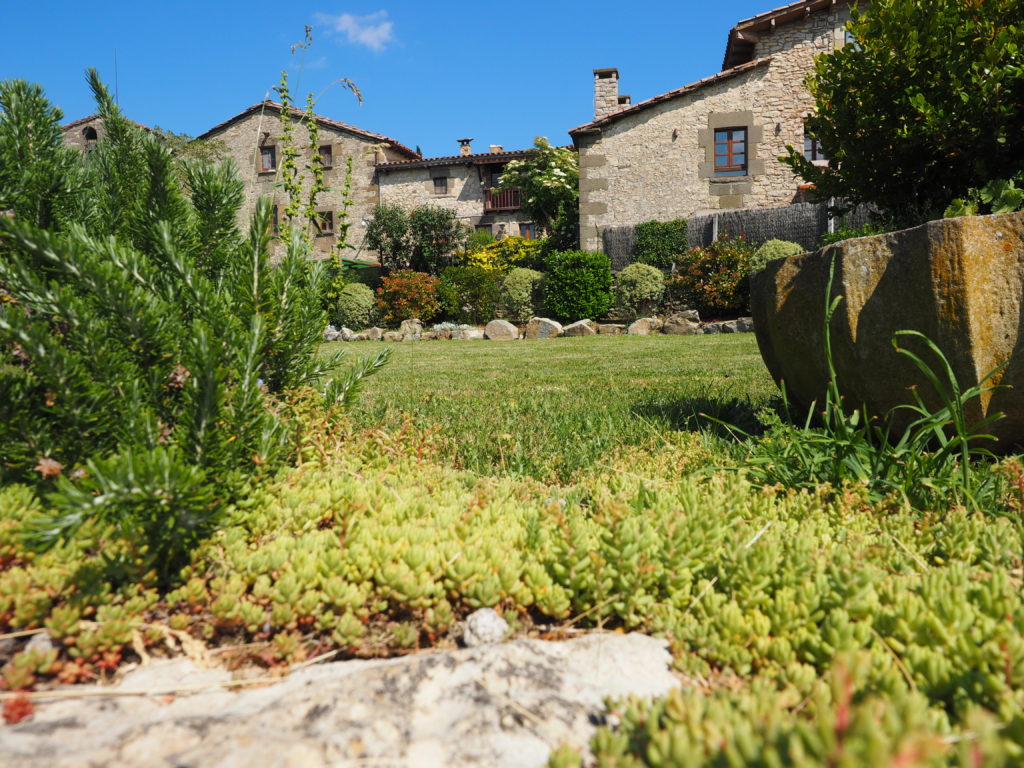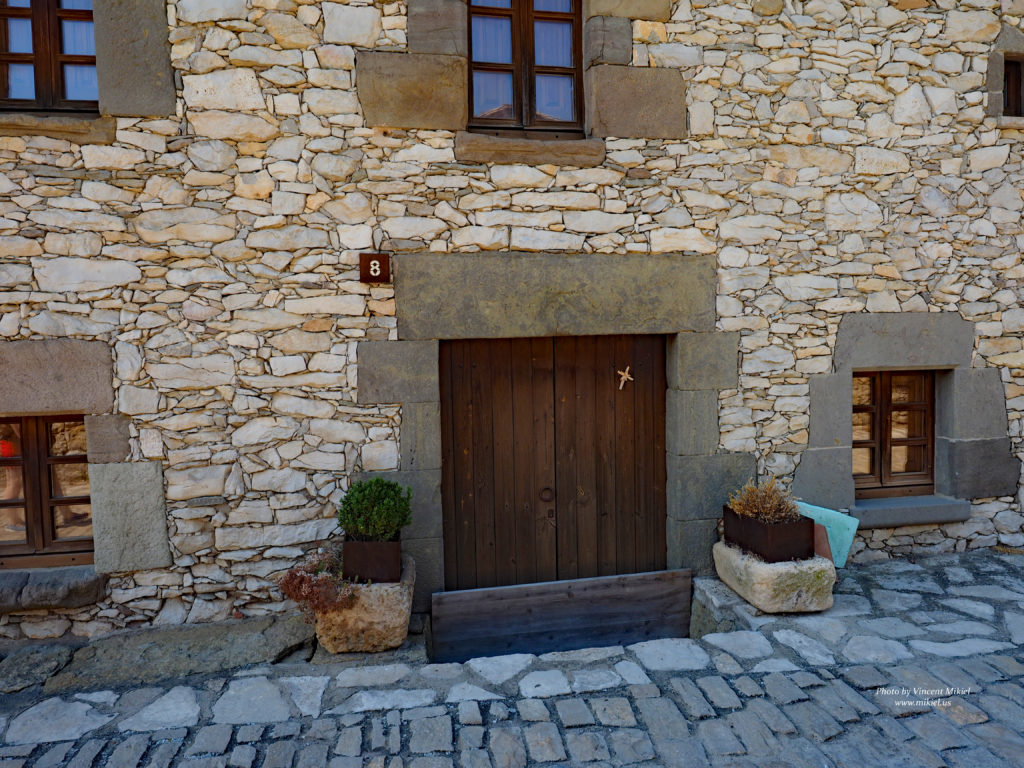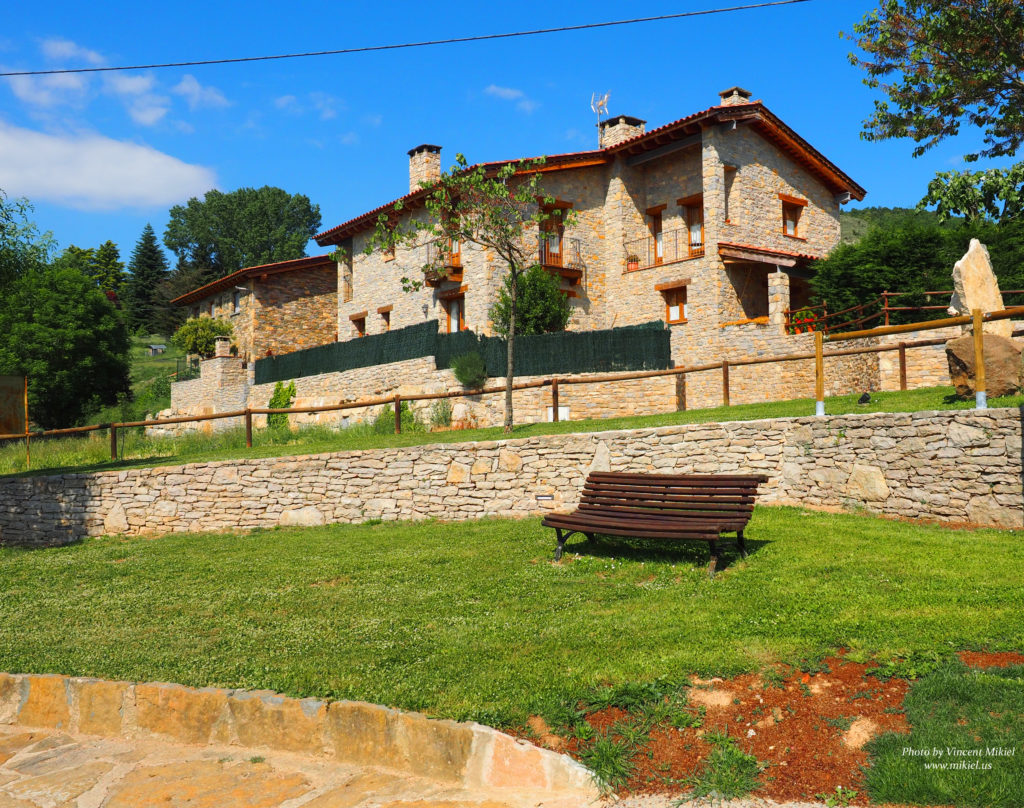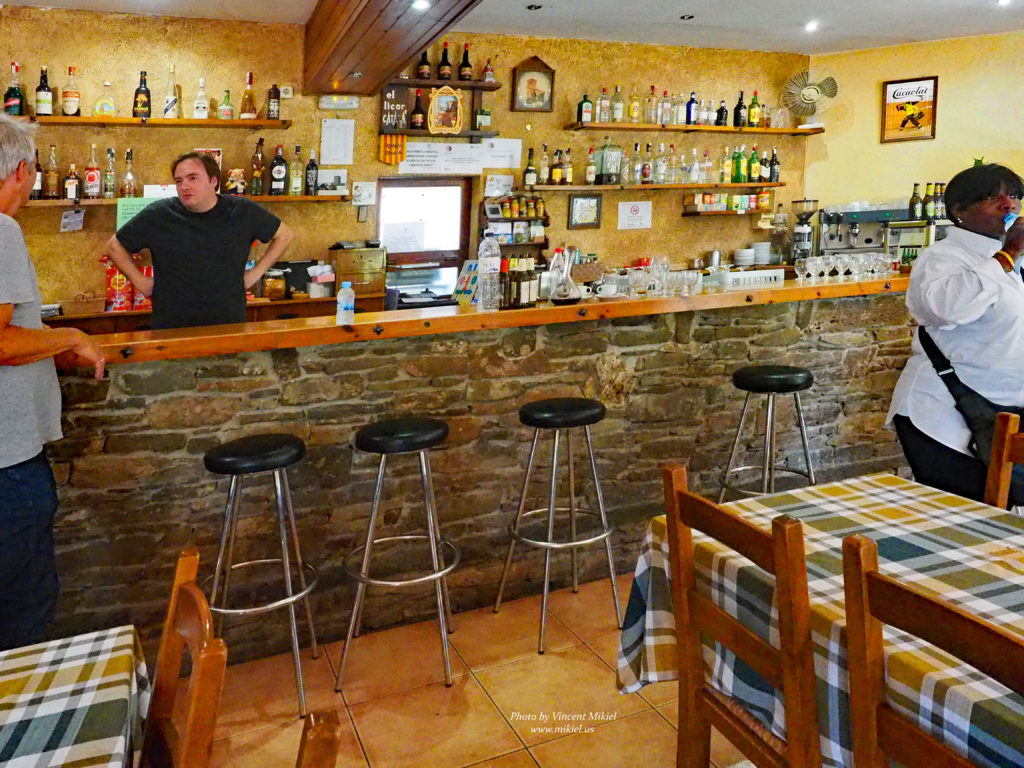If we were to do it again, and we plan to, we would have extended our trip to Barcelona and taken the 3 day tour of Medieval villages that included a trip across the Pyrenees to France (Aragon and other places). Don’t get me wrong, our tour of villages was excellent and at the recommendation of our guide we had lunch in Pruit which turned out to be the best meals we had on our trip next to the gourmet that included champagne at the Flamenco dancer show.
Besalú,
Besalú, the most interesting Spanish village you’ve never heard of according to the NY Times
With a population of approximately 2400 people, Besalú makes an interesting and relaxing day trip from Barcelona. As you wander the the narrow streets, it’s hard to believe that during the Middle Ages this now tranquil small town was once an important local capital.
What to See in Besalú
Besalu’s star attraction is without doubt the Romanesque bridge over the river Fluviá. It’s curious to think that as you approach the town across the old bridge you’re following in the footsteps of a thousand years worth of travellers.
The entrance to the village is guarded by a moat and an iron gate.
The iron gate
Crossing the bridge you are greeted by the inevitable “git shop.”
Wandering the streets of this medieval town you discover that it is still inhabited by apartments, shops and restaurants.
The picturesque town center is a compact huddle of restored medieval stone houses, small squares and narrow cobbled/flagstone streets. The most notable buildings are the Miqve (Jewish baths and synagogue), the Church of Sant Vicenç and the Sant Pau Monastery. Guided walking tours can be organised by the Tourist Office (essential if you want to visit the Miqve).
Of course there is a church, the Church of Sant Vicenç and a monastary in addition to Miqve (Jewish baths and synagogue),
One last look at the entrance gate.
While you’re here it’s also worth visiting the unusual Micromundi miniatures museum.
It only takes an hour or two to “see” Besalú and it’s easy to combine with a visit to nearby Girona since there are frequent local buses between the 2 towns. You can then either spend the night in Girona or get one of the regular trains from there to Barcelona.
In September the town stages it’s annual medieval fayre.
How to get there from Barcelona
We visited Besalu via our medieval village tour from Barcelona. Foor the more confident traveller you can take the trip on your own – unhindered by time schedules.
There are four buses daily between Barcelona and Besalú. The route is operated by Teisa and departs from the company’s offices at C/ Pau Claris 117. Please note that this is NOT a bus station. The journey takes around 1 hour 45 minutes, the fare is approximately €15. Bus timetable and prices here.
Buses from Besalú to Girona here
Trains from Girona to Barcelona here
If you have a car it takes about 1 hour 45 minutes to drive to Besalú via the AP7/E15
RUPIT & PRUITT
The second stop on our medieval village tour was Rupit. This medieval town is worth a visit. is a wonderful town in Catalonia, 98km far from Barcelona city. Due to the distance is a perfect day excursion from Barcelona, it is just one hour away from the capital. It is worth it to go for a day trip and visit the town, Rupit and also Pruit that is the next town and they are two “married towns”, it is funny enough that they share the same letter of their name.
The streets and houses of Rupit are from XVI and XVII centuries, all of them made from stone and this rustic atmosphere gives the town this medieval touch.
One of the things to pay attention to is the rock wall that dominates the village. The rock, in Latin called “rupes”, is where the castle was built, and from there comes the origin of the name of the villages.
There is an old hanging wooden bridge, the bridge was built in 1945 by craftsmen from the same town. The bridge is a tourist attraction, with wooden floor if you are not a fan of heights, this is not for you. I had a great the experience of crossing a suspension bridge, I have to say that impresses more than I thought. Rupit is the perfect town to take loads of photos as every corner is special, surrounded by stone houses with this medieval touch and beautiful gardens and vegetation.
There are loads of activities and routes to do around if you plan to go for a weekend or a longer stay: trekking, horse riding, cycling etc…
My recommendation if you enjoy walking and hiking is to follow the path GR-2, it takes 4 hours go and return to go from Rupit to Tavertet, this path goes along beech woods and little rivers and you will see the beauty of this area in Catalonia.
Interesting shops in Rupit
There is a great bakery there called L’Era Bakery where you can buy bought loads of things to bring home: a sponge cake, apple cakes and onion bread. They have a wide variety of bread in the bakery to choose from: soya bread, onion bread, olive bread… If you go around breakfast time or anytime to have a bite is a good place to stop by.
Ca l’Ample in Rupit is a very special shop that you can’t miss, they sell carquinyolis and ratafia, two typical products from autumn and winter time that you have to try.
Carquinyolis: is a Catalan pastry made with whole or sliced almonds
Ratafia: is a Catalan sweet liquor made from green nuts and herbs, it is the perfect beverage for winter/autumn times and goes hand in hand with pastries and desserts. Grannies used to make them at home -although is illegal to produce alcohol at home-, in little towns was the usual.
Just enjoy walking around the city and taking in the sights.
At the advice of our guide we had lunch at the Cafe Con Marsal. It was one of the best meals we had during our stay in Barcelona.
Of course there were many other restaurants that looked intriguing.
TAVERTET
The smallest village on our tour was Tavertet. This medieval village is still occupied and offered a glimpse into life in the middle ages.
On the way back to Barcelona we stopped at a cafe fo a rest stop.
